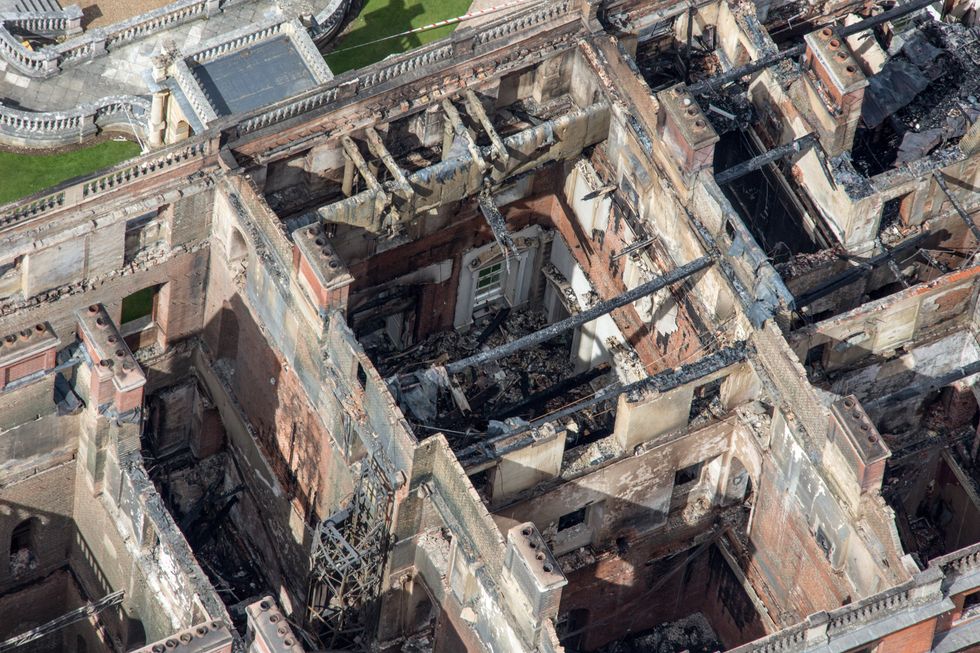Activists have accused the National Trust’s £63million plan to maintain the fire-damaged state of a Grade I listed mansion as an “act of barbarianism”.
Clandon Park, an 18th-century estate, was devastated by fire in 2015 in what was considered the greatest disaster in the Trust’s history.
Rather than fully restore the historic building to its former glory, the Trust has planned to add modern features, including a roof terrace and elevated walkways.
As a result, the decision has sparked a heated battle between the charity’s leadership and traditionalists who are fighting to preserve the building’s original character.

Clandon Park in Surrey was devastated by a horrific blaze which damaged over 95 per cent of the stately home in 2015
PA
The devastating fire at Clandon Park in 2015 is believed to have started from an electrical fault in the basement, causing a blaze to tear through the historic building, damaging 95 per cent of the stately home.
Although the National Trust initially expressed hopes to rebuild the Grade I-listed mansion, by 2023, the Trust announced that its approach had “evolved in response to expert assessment”.
The Trust received a £63million insurance payout after the fire, with campaigners claiming that only £23million would be needed to restore the building’s exterior.
However, the National Trust intends to leave the house’s interior “bare”, describing their project as a “purposeful forward-looking response” to the fire, which will restore the exterior.
The Trust’s director general, Hilary McGrady, defended the approach, arguing that preservation sometimes involves “the judicious conservation of fragmentary remains”.
The plan faced opposition at the charity’s annual meeting last year, where Restore Trust unsuccessfully attempted to force full interior restoration and is now fundraising for a barrister to continue opposing the application.
LATEST DEVELOPMENTS:
The Trust has indicated it will need to use both the insurance money and funding from its reserves to complete the project.
Harry Mount, who is campaigning to save the manor house, criticised the Trust for collecting insurance money meant for a full rebuild while planning walkways through an empty interior.
“This is tantamount to asking for permission to keep a great building which could easily be restored – in its wrecked state,” he said.
“If I’d applied to burn down Clandon, when it was in its pristine, beautiful state, would I have got planning permission? I hope not. This is the same: seeking permission to preserve a burnt building rather than restoring the phoenix from the flames.”
The Restore Trust has continued to oppose the plans, arguing that the £23million needed for exterior restoration is far less than the insurance payout received.

The Restore Trust has continued to oppose the plans, arguing that the £23million needed for exterior restoration is far less than the insurance payout received
GETTY
Rupert Onslow, the 8th Earl of Onslow, delivered a scathing assessment of the Trust’s plans.
“They can’t put back the family history and all the portraits of all my hideous ancestors, so the place is dead. It’s not restoration that they’re doing, it’s just advertising that the place has burnt down,” he said.
A Trust spokesman has said: “The overwhelming majority of feedback we have received since then has been positive about the plans for Clandon.”
The Trust expects to reopen Clandon Park to the public in 2029.
The historic house served as a military hospital during the First World War and, during World War Two, it was used as a depository for the Public Records Office.